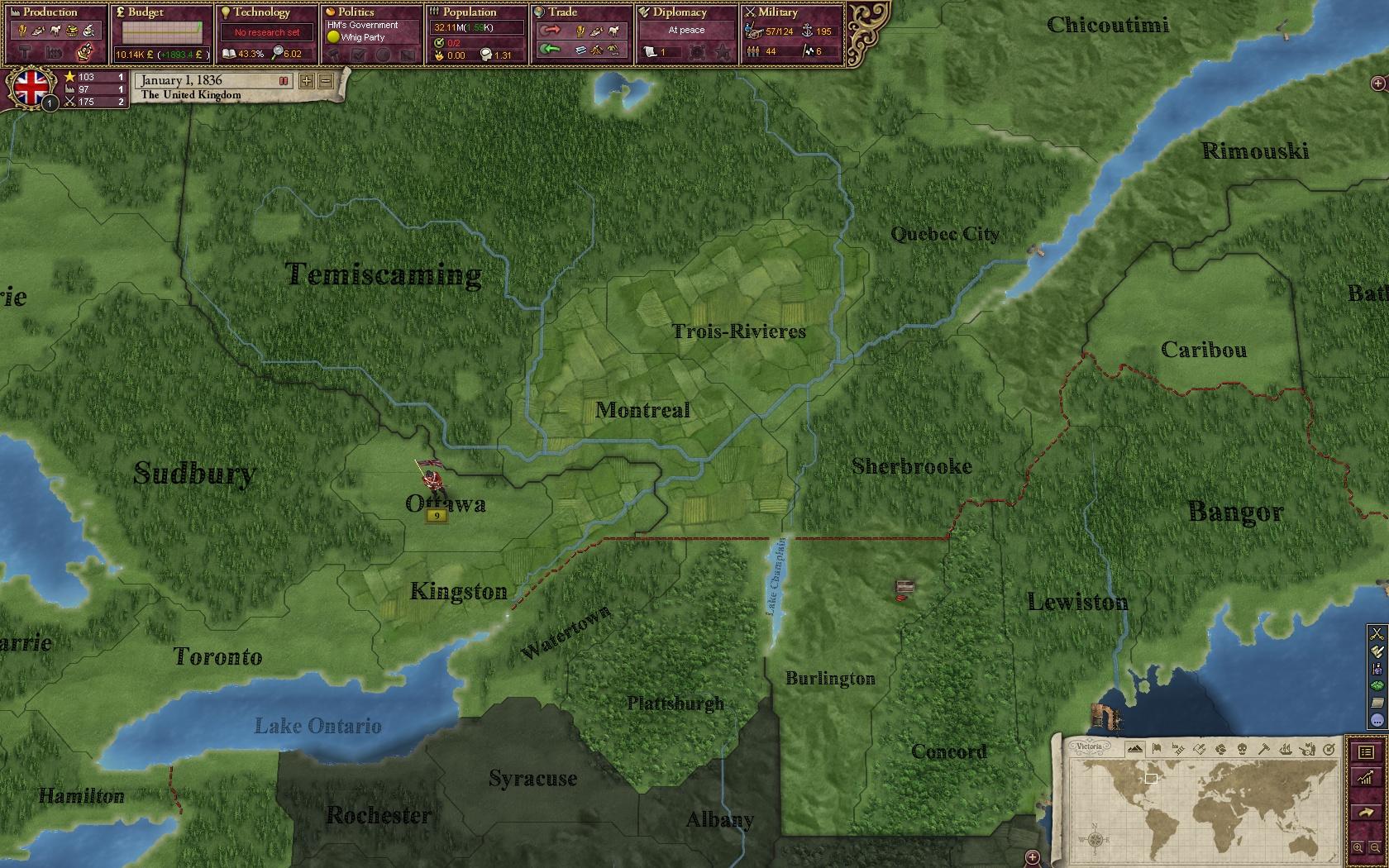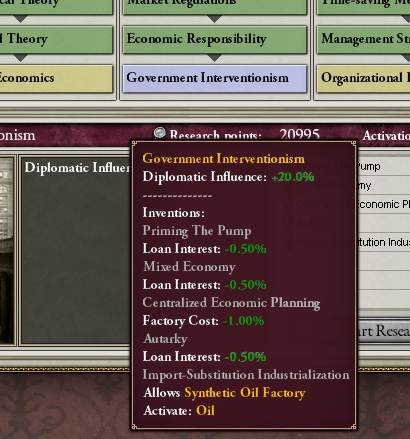Sphere Of Influence Victoria 2
Influence and Spheres. In Victoria 2, members of a sphere form a common market, on which goods are purchased and sold first, before going to the world market. This can be beneficial to ensure resource availability, as well as a captive market for finished goods. It is important to note that tariffs will not apply to goods purchased on this 'common market'.


A preview image of Victoria II showing the political map mode, interfaces, and Northern Italy in 1836.Victoria II spans the globe from 1836 to the start of 1936 with over 200 playable nations. Like its predecessor, Victoria II focuses on internal management, covering the and social/political changes in a country with 8 different government types. The game gives a lot of importance to the economy of a country by having a complex with over 50 types of goods. While warfare is a component of the game it is not the primary focus as in other Paradox Interactive games such as the series.Nations' populations are divided into,. There are several different population groups or 'pops' being, clerks, craftsmen, and, the last being additions to Victoria II.
- When you move into someones sphere (as a secondary power or plain country) you gain access to that countries resources based on your prestige compared to all the other sphered countries - and the sphere owner will buy all the good you produce. this is vital to remember as you loose this benifit as soon as you become a great power so.
- Still, jockeying for the favor of minor nations and expanding your sphere of influence (which affects your prestige) while decreasing those of others is fun, if a bit tedious and repetitive. Victoria II adapts the specific casus belli introduced in Heir to the Throne, letting you set specific goals before conflict starts, like gaining territory, money, prestige, or releasing nations.
As in other Paradox titles, like, historical missions called 'decisions' that are micro-objectives in the larger game have been added. There are thousands of historical events and decisions as well. These events and forces can lead to the creation or disintegration of nation states.Victoria II contains a number of changes and improvements from its predecessor. The interface was streamlined when compared to the original game, which was described by producer as, 'the interface God forgot'. Automation of various tasks has been added, including trade and population promotion. The has received an overhaul by having clergy educate people of the same religion, and each population group now has their own levels.
Education and literacy's importance is reflected in the vast technology system that contains thousands of inventions. Additionally, the functioning of in the game was tweaked such that population groups are more sensitive to changes in their country's situation, as well as inclined to agitate for specific levels of political and social reforms. Economy The economic system in Victoria II attempts to simulate the flow of resources in a world market. Every province in the game produces a resource in resource gathering operations (RGOs). Some resources, such as, are demanded principally by the population. Other materials, like, are consumed primarily by, but are still tradeable.The production and system from the original Victoria has been revised to better reflect market forces, whereas in the original, the state provided the funds for resources and the player possessed a wide range of options with which to build their economy, provided they had access to the proper.
All resources can be collected or produced by industry. The game also has a cottage production system simulating. Diplomacy Victoria II contains a deep reflected in 8 different types of governments, 7 ideologies and a new system, and a new election system with and legislatures.The in Victoria II is similar to that of other Paradox titles. Each country has a relation value of –200 to +200 which represents how much they like each other.
Diplomatic and in game actions shift this relationship around and it factors into the AI's decisions. However, Paradox Interactive has expanded parts of this system. War goals from, an expansion for have been integrated though they function in a slightly different way. More war goals can be added as the war progresses, although this depends on the population's temperament. Failure to achieve a war goal will increase the population's militancy, which can lead to revolts as well a loss of prestige.In the game controlling a, one of the eight countries with highest total score, gives special diplomatic options not available to other countries. Great Powers do not just influence how a country sees them; they have the added ability to use their influence on other countries to change their perception of other Great Powers.
The struggle for influence that the Great Powers wage around the world is not a simple bilateral basis but occurs with each other inside different countries, giving an added dimension to diplomacy which was not present in the original Victoria.Warfare Warfare is regarded as a lesser priority than politics and economics in Victoria II, though it follows the basic pattern used in other Paradox grand strategy games, with armies moving between provinces and engaging enemy armies and capturing enemy territory. The basic combat system is a combination of the systems used in,. A key component to combat is 'frontage': the number of units in an army at the, which decreases as technology improves to simulate the change from the roving armies of the to the continuous trench lines of.Several aspects of the military have been changed from Victoria. The base unit has been reduced from a 10,000-unit to a 3,000-unit, which is no longer raised from a national manpower pool but directly raised from a provincial soldier POP, to which the brigade remains connected. A new aspect to the military is. This is a value that gives a bonus (or penalty, if low) to capturing provinces and defeating enemy armies; in prolonged combat, however, the reconnaissance value drops. Units such as cavalry and aeroplanes have high reconnaissance values and are intended to be used as scouts.
Development The decision to create Victoria II was influenced by voting on the Paradox Interactive forums and debate within the company. The CEO of Paradox Interactive, publicly announced his belief that the game would never see a profit while other members of the company such as were confident it would be profitable. To this end Wester promised that if the game did indeed make a profit he would shave his head and post the pictures onto the forum. This belief stemmed from lackluster sales numbers. It was revealed in a German interview with Fredrik that 70,000 copies would need to be sold in order for Victoria II to be profitable.
On June 17, 2010, from shaved it off for him. Expansions and mods Victoria II has received two main expansion packs, as well as numerous other smaller additions. WW: March 30, 2012,Mode(s)A House Divided was announced at the as an expansion pack with an aim on 'improving the political and economical aspects of the game, with focus on the era'. It was released on February 2, 2012 for Windows and on March 30, 2012 for OS X; it is currently only available for purchase by download. WW: April 16, 2013,Mode(s)The Victoria II: Heart of Darkness expansion was released on April 16, 2013. It includes the following features:. A brand new system;.
A new system;. Significant changes to land combat (particularly, recon/siege);. A number of top-level interface upgrades including many new map modes;. Introduction of and many events, allowing smaller nations to achieve their aims with the aid of Great Powers;. Introduction of which provide information about events around the world; and.
Several tweaks to industrial production.Other DLC A selection of smaller DLC has been made available for purchase for Victoria II. ^ 2010-04-05 at the, IGN. ^. Snowball Studios. Archived from on February 4, 2012.
Retrieved 2018-07-06. ^.
September 17, 2010. Archived from on July 14, 2011. Retrieved 2010-11-30. Archived from the original on 20 April 2016. Retrieved 2017-04-02. CS1 maint: BOT: original-url status unknown.
^ 2009-08-23 at the, Paradox Plaza. 2010-01-26 at the, Paradox Plaza. 2010-02-01 at the, Paradox Plaza., Youtube. 2010-02-15 at the, Paradox Plaza., Paradox Plaza.
^, Paradox Plaza. 2009-08-26 at the, Paradox Plaza. (in German) 2014-10-08 at the, Making Games.
2010-06-21 at the,. 2012-10-01 at the, Paradox Plaza. From the original on 2012-01-15. Retrieved 2012-01-24. CS1 maint: Archived copy as title , Paradox Plaza. ^.
CBS Interactive Inc. From the original on 31 January 2012.

Retrieved 23 May 2013. ^. CBS Interactive Inc. From the original on 12 November 2015.
Sphere Of Influence Crossword
Retrieved 1 September 2015. ^.
CBS Interactive Inc. From the original on 23 August 2015. Retrieved 1 September 2015. ^ September 6, 2010, at the. Brown, Fraser. From the original on November 4, 2015. Retrieved July 6, 2018.
From the original on February 7, 2018. Retrieved July 6, 2018. ^ August 28, 2010, at the. Bitterman, Tom.
Gaming Nexus. From the original on 24 September 2015. Retrieved 1 September 2015. 23 October 2013. From the original on 1 April 2015. Retrieved 2013-10-24. Paradox Plaza.
From the original on 3 April 2017. Retrieved 28 December 2015.
From the original on 29 January 2016. Retrieved 28 December 2015. Paradox Interactive. Retrieved 24 August 2018.External links.